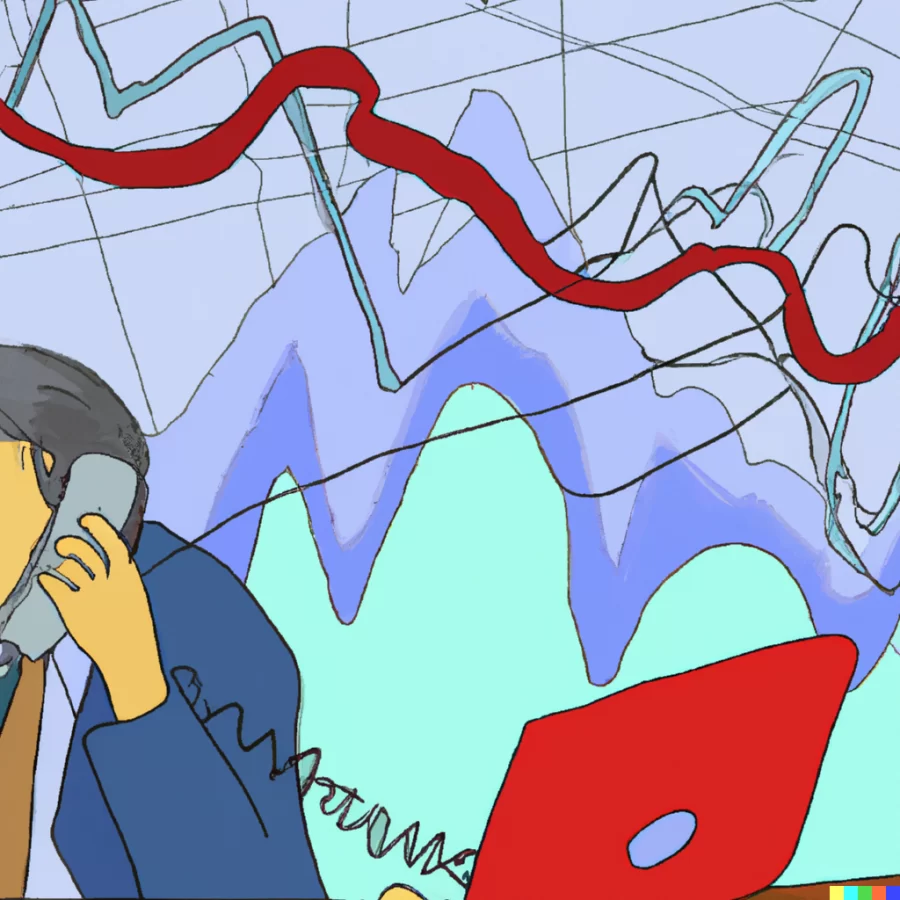The 21st Century Perception Poll
April 21, 2023
“Confidence Polls” are such a funny concept, probably because they represent the all consuming rabbit hole of data in the information age. Polls were originally conducted to get a read on people’s opinions of political candidates and policies. Since then, they have become increasingly more abstract, attempting to answer more cerebral and complex questions: it is now normal to find polls attempting to quantify everything from how Americans perceive their own parenting, to America’s perception of the Middle East.
The measurement of “perception” is one of the most rapidly growing sects of modern polling, and perhaps the most absurd. The popularity of the perception poll makes a perfect commentary on our modern political climate all on its own–it seems that our policymakers care more about what people think about things, and less about whether these perceptions are accurate. As long as a political hopeful can play to a commonly held belief, accurate or not, they can automatically bolster their chances at mainstream recognition.
One other thing about the perception poll: results are often resoundingly unified in their overwhelming agreement on totally incorrect perceptions, and overwhelming negativity.
A torrent of recent polls about the economy conducted after the collapse of Silicon Valley Bank are the most recent indicators of this negativity: One recent AP Poll found that a miserably low 10% of adults expressed “high confidence” in American financial institutions. Another Gallup Poll found that 72% of Americans believe that the economic conditions are getting worse and will only worsen in the coming year. Things aren’t much better politically: 70% of Americans believe that the country is “On the wrong track” according to Morning Consultant’s most recent numbers, and Biden’s approval rating continues to wallow in the high 30s and low 40s, a continued trend of low presidential approval ratings since Obama’s tenure.
So, what’s the matter? The most obvious answer is that things are simply bad for the average American, and for America in general right now. That’s not entirely true, though–yes, inflation has hit working people hard, but consumption rates, the employment rate, and wage growth have all remained strong to help ease the pain of rising prices. Inflation has also started to cool across the country, albeit slowly.
Politically, there are more challenges. Divisions cut deep as the political right and left are caught in what can only be described as a bitterly partisan, once in a generation identity crisis: both sides assert that the other is not only wrong, but morally evil. But with such a stark split down the middle, wouldn’t you expect at least closer to 50% of the country agreeing that it was headed in the right direction? Perhaps many might be concerned about the division itself, or seem some wins but net losses, which results in a negative perception? Herein lies the problem with perception polling: it creates a vicious feedback loop, with little or no foundation in reality.
First, on the “basis in reality” problem: headline numbers from these perception polls can be alarming, but they completely cut out any nuance. One could believe that America is on the wrong track, but is still slowly getting better. One could believe that economic conditions are getting worse in general, but be comfortable with their own finances. In fact, 85% of Americans describe their current personal financial situation as excellent, good, or fair, suggesting that overall negativity with regard to the economy may be overestimated.
Second, on the feedback loop: every time a perception poll with overwhelmingly negative results is conducted, it is inevitably reported on. Not only do we get the initial negative report, but the amplification of the data on news sources from across the country. This coverage breeds a fascination and meta-obsession with polling results. When initial results are negative, that means that the feedback loop will inevitably be negative, and only drive more negative coverage. Sociology news flash: when one person feels bad and amplifies their feelings, it can often bring others down who surround them.
This cultural dynamic has also bred a sort of social chicness in negativity: agreeing on the fact that everything sucks can be an excellent builder of social bonds. This social coping strategy was almost universally employed during the Pandemic, during which an acknowledgement of misery seemed to be a prerequisite for every conversation. It seems the dynamics have continued even after almost everything has returned to normal, though, and to wallow in negativity remains the norm for many.
This perception poll problem is likely also driven by the mental health crisis the U.S faces. As an increasing number of people face anxiety and depression, it’s easy to see how an increasing number of people would say things are bad–conditions like these can numb even the best feelings for many people who suffer from them.
Don’t get it twisted: this analysis is not meant to downplay the problems The United States is facing at the moment. There certainly are major challenges, many of which seem larger than anything we’ve had to contend with before. Do we collectively need to start thinking that everything is great all of a sudden? No. Do these numbers even have to change for things to get better? Not really. Maybe it’s time to stop focusing on them so much, though.


